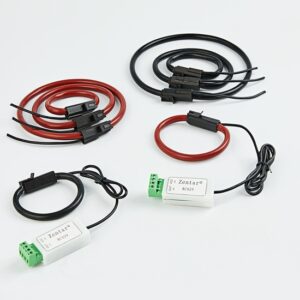Current transformers (CTs) are the silent workhorses in power systems, responsible for accurate current measurement and safe relay protection. But not all CTs are made the same. A common question that puzzles many engineers and electricians is: What’s the difference between a bus-type current transformer and a pillar-type current transformer?
At first glance, these terms may sound interchangeable, but they refer to distinct structures, functions, and applications. Let’s break them down.
What Are Current Transformers (CTs)?
Basic Working Principle
CTs reduce high current to a manageable level for meters and protective relays, enabling safe and accurate monitoring in high-voltage systems.
Applications in Protection and Metering
They are widely used in switchgear, substations, industrial power distribution, and relay protection systems, ensuring system performance and fault isolation.
Classification of Current Transformers
Overview of Common Types
CTs can be categorized by installation (indoor/outdoor), insulation (dry-type/oil-immersed), and structural form—bus-type and pillar-type being two of the most common in medium- and high-voltage equipment.
Focus on Bus-Type and Pillar-Type CTs
These two types vary significantly in design and application environment, especially in high-voltage switchgear and busbar configurations.
Bus-Type Current Transformers
Also Known as Through-Core CTs
In bus-type CTs, the primary conductor passes through a central hole, while the transformer core and secondary winding are molded together with insulating material.
Structure and Insulation Method
-
Primary conductor is not part of the molded structure.
-
There is air insulation between the primary and secondary.
-
Core and secondary winding are cast in epoxy or other insulating resin.
Applications in Busbar Bridges and High-Voltage Switchgear
Ideal for locations where current-carrying busbars run across transformers, such as in switchgear cabinets and bus bridges.
Pillar-Type Current Transformers
Core and Winding Integration
Here, both the primary and secondary windings are wound onto the core and cast into a single body with insulating material.
Functions as Both CT and Mechanical Support
Pillar-type CTs serve dual roles—as a transformer and as a physical support structure for the primary conductor.
Common Use in Compact, Space-Limited Environments
Their smaller size and integrated structure make them well-suited for compact panels and installations with limited room.
Structural Differences Between Bus-Type and Pillar-Type CTs
Winding Arrangement
-
Bus-type: Only the secondary winding is molded; the primary passes through.
-
Pillar-type: Primary and secondary both wound and cast on the same core.
Isolation Method
-
Bus-type: Air gap provides insulation, reducing insulation failure risk.
-
Pillar-type: Direct casting means greater insulation risk under fault conditions.
Insulation Approach
Bus-types use a mix of solid and air insulation, while pillar-types rely entirely on solid dielectric insulation like epoxy.
Performance Characteristics Comparison
Dynamic and Thermal Stability
-
Bus-type: No current flows through the CT body—no dynamic or thermal issues.
-
Pillar-type: Primary current passes through the body—must withstand heat and electromagnetic stress.
Contact and Heat Issues
Pillar-type CTs have two terminals for primary connections. Poor contact may lead to localized heating and performance degradation.
Fault Tolerance Under Short-Circuit Conditions
The compact terminal spacing in pillar CTs can lead to flashovers during short-circuit faults, affecting insulation integrity.
Transformation Ratio Considerations
Early-Stage Differences in Ratio Capability
Historically, pillar-type CTs couldn’t achieve high ratios due to design constraints.
Modern Improvements in Pillar-Type CTs
With advances in materials and casting, pillar CTs now support higher transformation ratios, though bus-types still dominate in extremely high-current applications.
Installation and Space Efficiency
Size Comparison
-
Bus-type: Generally bulkier, requiring more installation space.
-
Pillar-type: Compact design, ideal for panel boards and switchgear.
Suitability in Compact Installations
Pillar CTs are preferred in space-restricted environments due to their smaller footprint and integrated structure.
Insulation and Corona Discharge Risks
Dielectric Materials Used in Bus-Type CTs
Typically uses epoxy resin and air gaps for insulation.
Voltage Distribution Across Insulation Media
The series combination of two capacitors—epoxy and air—shares the dielectric stress. However, air bears more voltage due to its lower dielectric constant.
Corona Discharge: Risks and Mitigation
Corona occurs when voltage exceeds the breakdown strength of air. In bus-type CTs, corona discharge is a serious risk without design countermeasures.
Equipotential Design Solutions
Use of Semiconductor Coating
Applying a semiconductor layer on the inner surface of the CT housing helps equalize electric potential and prevent partial discharge.
Equipotential Connections and Their Purpose
By connecting one end of the equipotential wire to the primary bus, the system ensures uniform voltage distribution, eliminating the air gap capacitor effect.
Advantages of Bus-Type Current Transformers
-
Excellent insulation reliability
-
No need for the transformer body to carry current
-
Low risk of thermal or dynamic damage
Advantages of Pillar-Type Current Transformers
-
Smaller size, space-saving
-
Multifunctional—acts as a structural support
-
Now capable of higher transformation ratios
When to Choose Which Type
Application-Specific Decision Making
-
Choose bus-type for high-voltage, high-current applications requiring superior insulation and safety.
-
Use pillar-type for space-constrained panels where integration is a priority.
Factors Like Space, Current Levels, and Safety Margins
Let installation conditions and performance requirements guide your selection—not just cost or familiarity.
FAQs
1. What is the main application of bus-type CTs?
They are primarily used in busbar systems and high-voltage switchgear where primary conductors pass through the CT core.
2. Can pillar-type CTs support high transformation ratios?
Yes, modern pillar CTs can support higher ratios than before, but still may lag behind bus-type CTs for extreme current ratings.
3. Why is corona discharge a concern in bus-type CTs?
Due to the presence of air gaps, voltage stress can cause corona, leading to insulation breakdown if not controlled properly.
4. Which CT type is better for compact switchgear?
Pillar-type CTs are better suited for space-limited installations due to their smaller footprint.
5. How do equipotential layers prevent insulation breakdown?
They equalize the voltage field, reducing the risk of corona discharge across air gaps in the CT housing.




